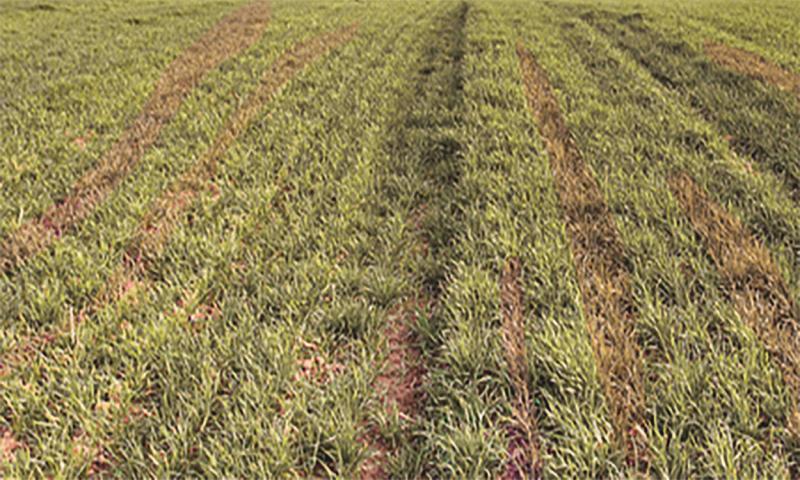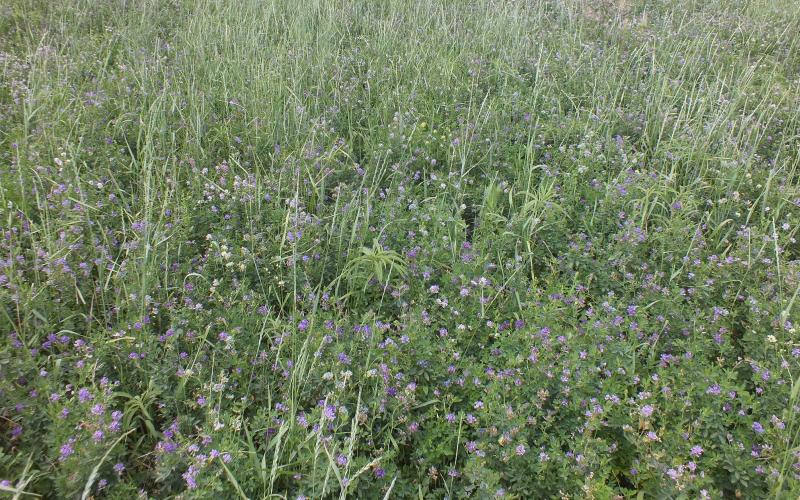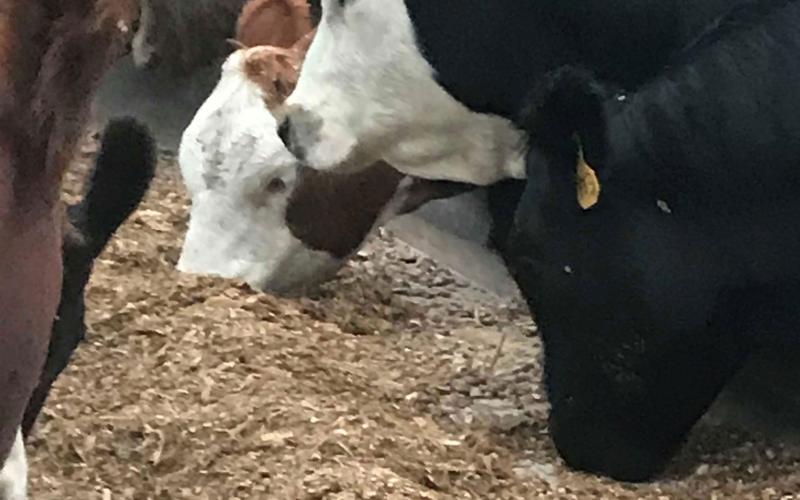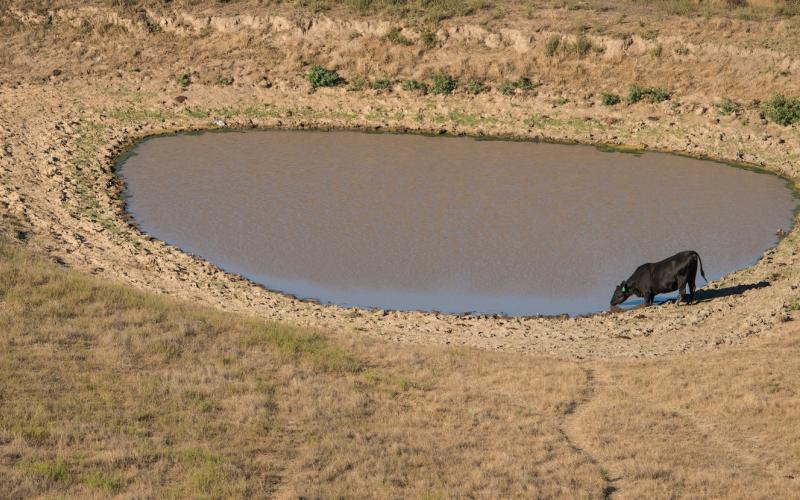
Key Takeaways
- Forage quality decreases rapidly as small grains mature.
- Nitrate toxicity potential increases under drought stress, particularly for small grains.
- Testing forages helps assess risk and prioritize harvest and feeding strategies.
- Ensiling reduces risk of nitrate toxicity.
Farmers understand well that, despite all our plans, Mother Nature always bats last. South Dakota producers often must consider whether to abandon plans to harvest small grain as a cash crop and instead pivot to harvesting as forage. There are some factors to keep in mind when evaluating salvage options.
Do Not Wait Too Long to Harvest
Time is not a grower’s friend when evaluating small grain fields. Forage quality declines rapidly as crops mature, so waiting to see how the crop progresses increases the likelihood of forage quality closer to straw than good hay. Harvest should be no later than soft-dough stage. As maturity advances, crude protein and energy concentration decrease, resulting in poorer feed value. This decrease occurs rapidly as the seed head matures, so once a grower decides to harvest as forage (and receives crop insurance clearance) the crop needs to be cut as soon as possible.
Watch Out for Nitrates
Nitrates accumulate in plants naturally, but different environmental conditions and management practices (nitrogen fertilizer application, herbicide application, plant diseases) can markedly increase nitrate concentrations. In drought situations, nitrate accumulation can be much higher than normal, especially in the lowest one-third of the plant stem. Nitrates are found in many different forages, including grasses (especially oats, millets, sudangrass, and other small grains), as well as pigweeds, kochia, and other species.
Whether or not a feed is high in nitrates cannot be determined by simply looking at a plant and determining that there is drought stress. The only way to know for certain is to get some kind of analysis conducted. SDSU Extension offers a Nitrate QuikTest, free to producers, a qualitative test that will indicate whether nitrates are present or not. Should they be present, growers should send the sample to a commercial lab for a quantitate analysis. View our list of Feed and Water Testing Labs to find a lab near you, and ship or drop off samples to verify nitrate nitrogen levels.
The degree of risk caused by nitrates to livestock depends upon nitrate concentration and if the diet is fed to pregnant animals. Pregnant cattle or sheep fed high-nitrate feedstuffs are at greater risk of abortion. Consequently, the tolerable limits for those livestock are less. Nitrates can cause sudden livestock deaths at high doses. Many feeds containing nitrates can be fed safely if diluted with other ingredients. However, at extremely high concentrations, the risk of “hot spots” is simply too high and feeding is not recommended. Dietary guidelines are found in Table 1. For a more-detailed discussion of nitrate toxicity, please read the publication, Frequently Asked Questions - Forage Nitrate Toxicity in Ruminant Livestock.
|
Nitrate Nitrogen - parts per million, dry matter basis |
Comments |
|---|---|
|
1,000 or less |
Safe to feed if adequate feed and water are available |
|
1,000 to 1,500 |
Safe for non-pregnant animals. Limit to 50% of ration dry matter for pregnant animals. |
|
1,500 to 2,000 |
Limit to 50% of total ration dry matter for all animals, may experience some symptoms of nitrate toxicity |
|
2,000 to 3,500 |
Limit to 35 to 40 % of ration dry matter. Do not feed to pregnant animals. |
|
3,500 to 4,000 |
Limit to 25% of total ration dry matter. Do not feed to pregnant animals. |
|
4,000 or more |
Toxic. Do not feed. |
Consider Harvesting as Silage to Reduce Nitrate Risk
Nitrates cannot be removed from feed and will not just go away on their own. However, ensiling forage can reduce nitrate concentrations by as much as 50%. The bacteria that ferment sugars and other carbohydrates also use nitrate nitrogen as a precursor for amino acids, resulting in less nitrate in the silage than was in the original crop. Some crops, such as oats, are notorious for accumulating large quantities of nitrate nitrogen, so much so that too often the salvaged crop is unsuitable (or at least extremely risky) to feed as hay. Harvesting these feeds as silage, however, produces a valuable feedstuff with less risk. In many (perhaps most) cases, planning on silage harvest as the default harvest method for high-risk crops, such as oats, would result in the greatest salvageable feed value per acre.


